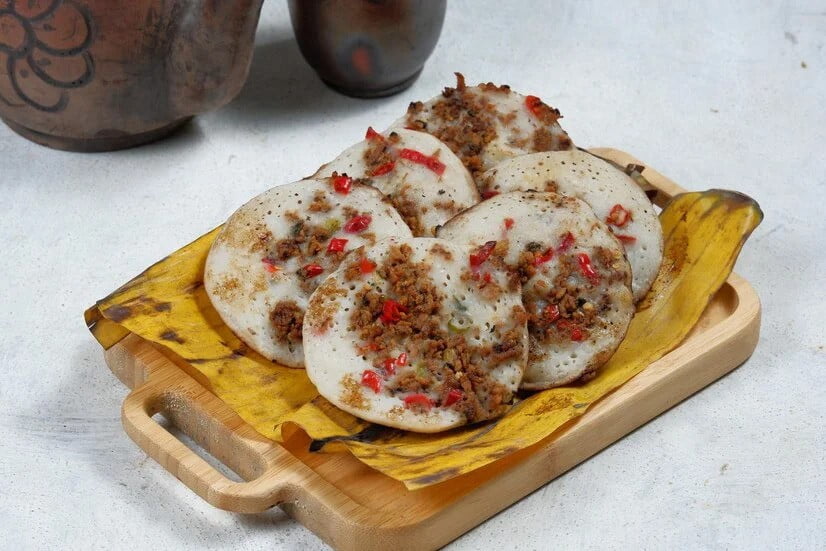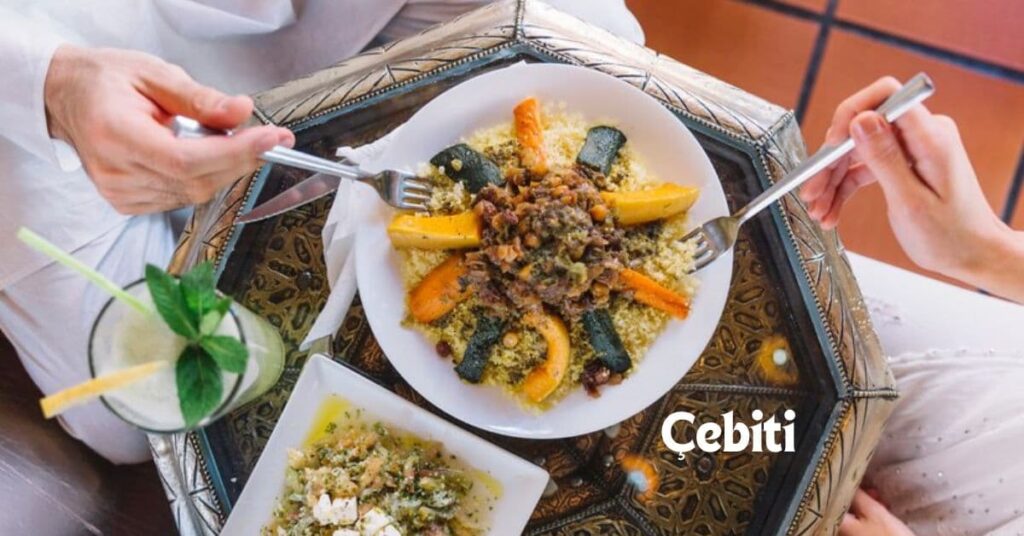Çebiti, a term steeped in the rich tapestry of Turkish culture, represents more than just a culinary delight; it embodies a concept of beginnings and innovation.
This exploration delves into çebiti’s dual identity, tracing its historical roots in the kitchens of the Ottoman Empire and its metaphorical significance in contemporary discourse across business and technology.
Çebiti In Turkish Cuisine
Historical Evolution
From the bustling markets of the Ottoman era to the sophisticated kitchens of modern Istanbul, çebiti has undergone a remarkable transformation.
Originally a simple dish prepared by nomadic tribes, it has evolved into a refined staple of Turkish cuisine, reflecting the complex interplay of spices and cooking techniques refined over centuries.
Regional Variations
In Turkey, çebiti’s preparation varies significantly from region to region, each adding its unique twist. In Ankara, for instance, çebiti involves pan-fried meats with tomatoes and peppers, enriched with spices like cumin and sumac, creating a rich sauce famously served with flatbread or pita for dipping.
Ingredients And Preparation
The quintessential çebiti dish consists of lamb, rice, and an aromatic blend of spices, including allspice, cinnamon, and mint.
The preparation involves slow-cooking the lamb to tender perfection, combining it with spiced rice and vegetables to create a harmonious blend of flavors that epitomize Turkish culinary artistry.
Nutritional And Health Implications
Çebiti is not only flavorful but also offers numerous health benefits. The spices are rich in antioxidants, while the lamb provides a high-quality protein essential for muscle repair and growth.
Modern variations have adapted the recipe to include healthier alternatives like leaner meats or additional vegetables, catering to a health-conscious audience.
Key Ingredients Of Çebiti: A Culinary Exploration

The charm of çebiti comes from its rich cultural heritage and the meticulously chosen ingredients that create its distinctive flavor and texture. Here, we delve into the essential components that make çebiti a memorable delicacy.
Semolina
At the core of çebiti is semolina, a coarse, purified wheat middling of durum wheat. Known for its robust texture and subtly sweet, nutty flavor, semolina provides a sturdy foundation for the dough. Its adaptability allows it to blend seamlessly with various flavors, pushing the boundaries of traditional çebiti recipes.
Sugar
Sugar plays a pivotal role in defining the sweetness of çebiti. It can be integrated directly into the dough or applied as a syrup after baking. This ingredient is crucial for crafting the sweetness that turns çebiti into a delightful treat, appealing to those with a penchant for sweet confections.
Butter Or Clarified Butter (Ghee)
Adding butter or ghee enriches the dough of çebiti, infusing it with a creamy, rich flavor and a melt-in-the-mouth texture. This fat is essential to impart a luxurious feel to the finished product, whether mixed into the dough or used as a glaze.
Milk
Milk is incorporated into çebiti dough to bind the ingredients smoothly, contributing to a tender and cohesive texture. It enhances the dough’s flavor profile with a mild sweetness and creaminess, elevating the overall taste and feel of the çebiti.
Rose Water Or Orange Blossom Water
Water adds a layer of aromatic intrigue to çebiti by incorporating rose water or orange blossom. These floral waters often lend a delicate, perfumed note to the sweet, enhancing the eating experience by engaging the smell.
This practice reflects the Middle Eastern influences prevalent in Turkish cuisine, offering the dish a subtle yet profound complexity.
These ingredients work in harmony to create çebiti. This treat satisfies the palate and connects eaters to the rich tapestry of flavors influenced by Turkish and Middle Eastern culinary traditions.
Preparing Çebiti: A Culinary Journey

Creating The Filling
The journey of making Çebiti starts with the preparation of the meat. Marinating the meat in oil, garlic, and various spices is essential. This not only tenderizes the meat but also infuses it with rich flavors, setting the foundation for a delicious dish.
Vegetable Preparation
Next, chop the vegetables into uniform, bite-sized pieces. This ensures they cook evenly and absorb the flavors of the spices and meat, enhancing the overall taste and texture of the dish.
Cooking Techniques
- Browning the Meat: Heat a large skillet and brown the marinated meat over medium heat. This crucial step helps develop a deep, rich flavor base.
- Sautéing Vegetables: Add the chopped vegetables to the skillet once the meat is browned. Sauté until they are tender and aromatic, allowing them to release their flavors into the dish.
- Adding Grains: If the recipe calls for grains, introduce them at this stage, along with the necessary amount of water. This ensures the grains cook thoroughly and absorb the savory juices of the meat and vegetables.
- Simmering: After combining all the ingredients, let the mixture simmer gently. Turning off the heat at this point allows the flavors to meld beautifully through slow cooking, enriching the dish’s complexity.
Finishing Touches
Once cooking is complete, taste the dish and adjust the seasoning as needed. Garnish with fresh herbs to add a burst of color and fragrance, elevating the visual appeal and adding a fresh dimension to the taste.
Nutritional Insights
Çebiti isn’t just a treat for the palate; it’s also nutritionally beneficial. The high protein content from the meat provides essential amino acids, while the vegetables contribute vitamins and fiber, supporting digestion and boosting the immune system. Spices not only add flavor but also offer antioxidants that promote health.
However, it’s essential to consider the fat content, especially if using fatty cuts of meat. Opting for leaner meats can make Çebiti a healthier choice without sacrificing taste.
By balancing the ingredients, Çebiti can become a delightful and nutritious part of your diet, offering flavor and health benefits.
The Linguistic And Symbolic Dimensions Of Çebiti

Linguistic Exploration
The term “çebiti” is not just a word in the Turkish language but a symbol of depth and complexity. It traditionally means “to start” or “to begin,” serving a crucial role in everyday conversations and more abstract philosophical discourse.
This etymological exploration unveils how çebiti mirrors significant life events and beginnings, resonating through various layers of society and thought.
The linguistic roots of çebiti anchor it firmly within the cultural fabric, where it acts as a springboard for broader reflections on life’s cycles and new ventures.
Çebiti As A Cultural Metaphor
In business and technology, the word çebiti has evolved beyond its literal meaning to become a powerful metaphor for innovation and new beginnings.
It symbolizes the spark of new ideas and the initiation of novel processes that drive industries forward.
This metaphorical usage encourages a culture of creativity and proactive thinking, which is vital for dynamic and evolving business environments.
Çebiti, as a concept, promotes an atmosphere where innovation is not just welcomed but is fundamentally integral to operational philosophies and strategies.
Modern Applications
Çebiti’s influence extends into the digital transformation sector, representing the melding of traditional values with cutting-edge technologies. It guides businesses and tech developers to adopt innovative practices that are effective, sustainable, and forward-thinking.
This concept has been instrumental in shaping strategies that embrace change and foster long-term success in a digital-first world.
Global Influence Of Çebiti

Cultural Exchange And Global Cuisine
As Turkish cuisine continues to enchant food lovers worldwide, çebiti has carved a niche for itself on the global culinary stage.
Its versatility and adaptability to different dietary needs and regional flavors highlight its universal appeal.
At international food festivals and culinary events, çebiti is celebrated as a dish that tastes Turkish heritage and acts as a culinary bridge between diverse cultures. It embodies the spirit of global exchange and mutual appreciation in gastronomy.
Impact On Digital And Business Practices
The metaphorical use of çebiti has profoundly influenced digital and business practices across various industries.
By embodying concepts of interconnectedness and continual innovation, çebiti inspires enterprises to look beyond traditional methods.
It encourages a holistic approach to business operations, ensuring all elements are aligned and functioning cohesively towards shared goals.
This philosophy has been particularly transformative in digital platforms, where çebiti principles have helped shape user engagement strategies and innovative product development, leading to enhanced processes and outcomes that are both innovative and efficient.
In sum, çebiti’s journey from a culinary ingredient to a symbol of innovation encapsulates its broad spectrum of influence, highlighting its role as a connector between traditional practices and modern advancements and between diverse cultures across the globe.
Frequently Asked Questions
1. Can Çebiti Be Made Vegan?
Yes, çebiti can easily be adapted for a vegan diet. Traditional dairy components can be replaced with plant-based alternatives such as almond or coconut milk and vegan butter.
2. Is Çebiti Gluten-Free?
By default, çebiti is not gluten-free since it typically includes semolina derived from durum wheat. However, to cater to gluten sensitivities, one can substitute semolina with various gluten-free flours, like rice flour or a gluten-free all-purpose blend.
3. How Long Does Çebiti Last?
Properly stored in an airtight container, çebiti can remain fresh for up to a week at room temperature. For extended storage, refrigerating it can maintain its quality for even longer.
4. Can I Use Honey Instead Of Sugar In Çebiti?
Absolutely, honey is an excellent substitute for sugar in çebiti recipes and will add a distinct flavor and slightly more moisture to the dish. Remember that honey has a more robust flavor than sugar, which might slightly alter the taste profile of the çebiti.
5. Can Çebiti Be Frozen For Long-Term Storage?
Yes, çebiti can be frozen. To preserve its quality, wrap it tightly in plastic wrap or place it in an airtight container before freezing. It can be stored in the freezer for up to 3 months. Thaw at room temperature or in the refrigerator before serving.
6. Are There Any Nut-Free Versions Of Çebiti?
Certainly, while some recipes might include nuts for added texture and flavor, they can be omitted or replaced with sunflower or pumpkin seeds for those with nut allergies.
7. What Are Some Common Spices Used In Çebiti?
Common spices in çebiti include cinnamon, cardamom, and nutmeg. These spices contribute to its distinctive, warm flavor profile, typical of many Middle Eastern desserts.
8. Can Çebiti Be Made Without Dairy?
Yes, you can make it vegan by substituting plant-based alternatives or using water or fruit juices as the liquid component to avoid dairy altogether.
Conclusion
Çebiti, in all its forms, stands as a testament to the enduring spirit of Turkish culture and its capacity to influence and adapt in a changing world.
From the kitchens of Anatolia to the boardrooms of global enterprises, çebiti represents a legacy of culinary richness and a beacon of innovation.
As we continue to explore and appreciate this multifaceted term, çebiti remains not just a dish or a concept, but a narrative of human creativity and resilience, promising to inspire and transform for future generations.
Read more:


